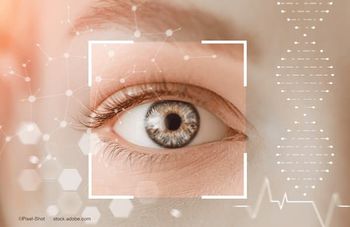
Bimatoprost implant reduces IOP for 2 years or more
Physicians find that additional treatment is not required for many patients.
A phase 3 clinical extension study of the bimatoprost implant (Durysta, AbbVie Inc) showed that patients had sustained lowering of their IOP for 2 years or more with no additional treatment and no changes in their visual fields, according to the first author of the study, Felipe Medeiros, MD, PhD, professor of ophthalmology and vice chair of technology in the Department of Ophthalmology at Duke Universityin Durham, North Carolina.
The bimatoprost implant is administered intracamerally through a preloaded applicater with a 28-gauge needle.
The previous results of the phase 1 and 2 clinical studies of the implant showed that the duration of the IOP-lowering effect of the implant had extended beyond the expected period of intraocular drug bioavailability,1,2 he explained.
The next steps
The investigators then conducted a 24-month, open-label, multicenter, long-term safety and efficacy extension study of patients with open-angle glaucoma or ocular hypertension who received a bimatoprost implant in a phase 3 trial and completed that study. This study included patients who were enrolled after completing 1 of the 2 identically designed, 20-month, randomly assigned phase 3 ARTEMIS trials, Medeiros recounted
The outcome measures of the extension study were both the number of patients who did not need additional (rescue) IOP-lowering treatment in the study eye for 2 or 3 or more years after the third implant administration during the ARTEMIS trial and the IOP and visual field mean deviation in the study eye of these patients. The study is ongoing and the investigators analyzed all data available up to February 2021.
Major findings to date
A total of 200 patients were included in the extension trial after completing an ARTEMIS trial. During the screening for the extension study, 69 of those patients had not received rescue treatment.
“The data that were available for 54 patients showed that these patients remained untreated for 2 years or more after they received the third implant during the ARTEMIS trial, and data available for 18 patients showed that they had remained untreated for 3 years or more after the third implant in the ARTEMIS trial,” Medeiros said.
In addition, the visual fields of the patients in the extension study who did not require rescue medication (ie, 50 of those with controlled IOP for 2 years or more and 16 of those with controlled IOP for 3 years or more) remained stable.
The investigators theorized that the prolonged IOP-lowering effect may result from bimatoprost-stimulated up-regulation of matrix metalloproteinases, leading to sustained tissue remodeling of the outflow pathways. Clinical studies are continuing with the goal of obtaining a further understanding of the duration of effect of the bimatoprost implant and factors that predict a long-term response.
Felipe Medeiros, MD, PhD
P: 919/681-3937
This article is adapted from Medeiros’ presentation at the American Academy of Ophthalmology 2021 annual meeting. Medeiros is a consultant to Allergan, an AbbVie company.
References
- Medeiros FA, Walters TR, Kolko M, et al. Phase 3, randomized, 20-month study of bimatoprost implant in open-angle glaucoma and ocular hypertension (ARTEMIS 1). Ophthalmology. 2020;127(12):1627-1641. doi:10.1016/j.ophtha.2020.06.018
- Craven ER, Walters T, Christie WC, et al. 24-month phase I/II clinical trial of bimatoprost sustained-release implant (bimatoprost SR) in glaucoma patients. Drugs. 2020;80(2):167-179. doi:10.1007/s40265-019-01248-0
Newsletter
Don’t miss out—get Ophthalmology Times updates on the latest clinical advancements and expert interviews, straight to your inbox.








































